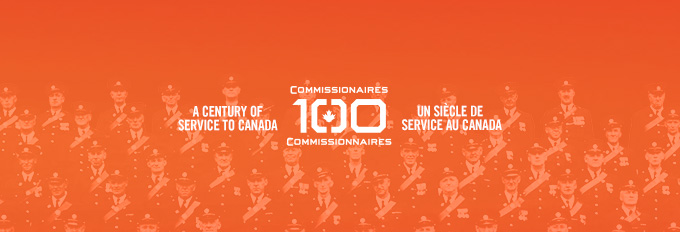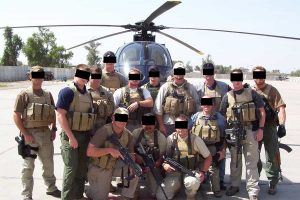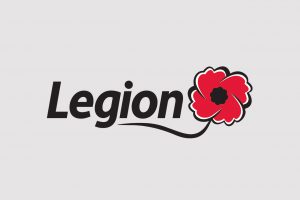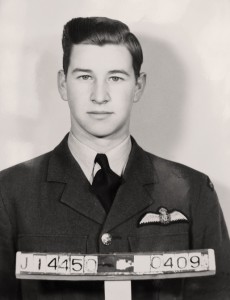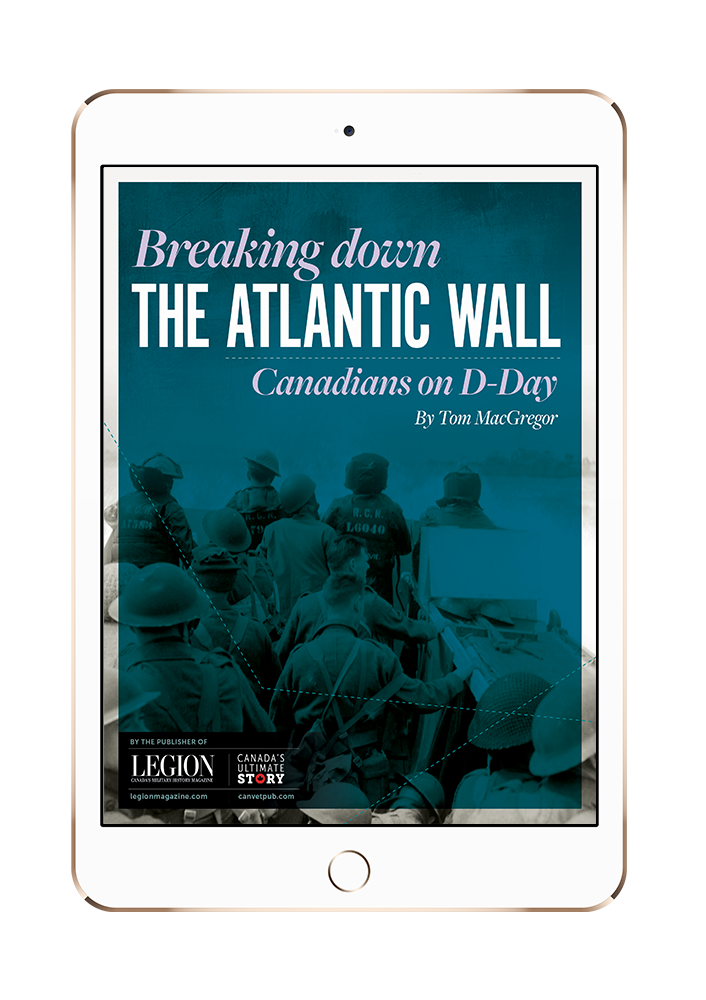by Ray Dick
 |
| The replenishment ship Protecteur is an important part of the fleet. |
It’s big and impressive, a steel and concrete structure six storeys high atop a rocky outcropping known as Signal Hill. Called the Wardroom and located adjacent to the main gate of Canadian Forces Base Esquimalt, the new $13 million structure to house officers and guests dominates the view of this hub of naval activity near Victoria—home base for the men and women of Canada’s Pacific naval fleet.
The view from the terraces, balconies and rooms of this fortress-like building is as impressive as the accommodations.
Southerly, ships from around the world ply the Strait of Juan de Fuca to the busy harbour of Vancouver. The slow-moving freighters drift by a backdrop of the snow-covered Olympic Range in Washington state and the American city of Port Angeles. Seals play in the base harbours, amongst the floating islands of kelp that become exposed at low tide, and occasionally, just occasionally, a family of killer whales is spotted despite the hectic manoeuvres of Canadian warships.
In stately splendour to the east sprawls the British Columbia capital city of Victoria, and just beyond that the Strait
of Georgia, a sea passageway stretching to Alaska and protected by Vancouver Island on one side and the Coast Mountain Range on the other.
But the history and the heart and soul of Canada’s West Coast navy lies to the west and north where the fleet ships are docked, some used daily for training and others awaiting maintenance or replenishment for exercises or operations at sea that in recent times have included the Persian Gulf and East Timor in Indonesia. Old brick buildings dot the busy dockyard, some of the bricks dating back to a time when navy propulsion was wind and sail and wooden British ships brought the bricks over as ballast to what was then their Pacific Coast base in the New World. A modern dry dock large enough to take anything from the navy or commercial shipping is available for major repairs, and a huge warehouse and workshop, soon to be expanded, handles replenishment and maintenance of the fleet and its equipment.
Nearby is the Maritime Operations Centre and the Rescue Co-ordination Centre that keep tabs on all traffic, identified or otherwise, moving in or into the area. The centres, along with the Canadian Coast Guard and police and civilian agencies, investigate roughly 3,000 incidents each year on land and sea in an area that stretches from Alaska to the Alberta border to the state of Washington.
A little further north of the Rescue Co-ordination Centre a deer nibbles its way past smoke-blackened bunkers, ships and helicopter mockups at the Damage Control facility where hundreds of recruits a year are trained to fight fires and patch leaks to keep the fleet’s ships and helicopters afloat or in the air. Just down the road is the Fleet Diving Unit (Pacific) where recruits are taught both shallow and deep diving and about mine clearing. A team from this unit was cited for its recovery work after Swissair flight 111 crashed into the ocean off Peggy’s Cove, N.S., in 1998. The crash killed all 229 passengers and crew.
Further north, in Patricia Bay and hard by the Victoria airport, is the home of 443 Maritime Helicopter Squadron with its five Sea King helicopters, at least two of which go to sea with the fleet on naval exercises and operations on the Pacific.
CFB Esquimalt also features a family resource centre that supports morale and quality of life issues. And just across an open field behind this stucco house is a large arena-type building surrounded by long lines of trailers and enclosed by high fences. Last year the barrack-type buildings housed hundreds of illegal Chinese immigrants tracked in their decrepit and leaking boats and intercepted at sea by Canadian naval, immigration and police officers. The illegal migrants were later moved inland to await immigration hearings and many have since been deported.
One way to really get your mojo going is to tag along on a day trip to sea with a three-ship convoy. Last October, the public was invited on board the destroyers Algonquin and Huron and the supply ship Protecteur, all veterans of recent actions in the Pacific Rim area. There were tours of the ships, demonstrations of refuelling at sea, rescues by the Sea King helicopters and ship-handling capabilities, including sharp turns and high-speed runs.
During naval exercises, Canada’s West Coast navy has been pitted against all kinds of navies, says Commodore K.F. McMillan, second in command of Maritime Forces Pacific, MARPAC, under Rear-Admiral Ron Buck. “We always come back proud. I am very confident we are ready to deploy. If something came up tomorrow, we can go.”
And something usually does come up for the navy on the West Coast and for the commodore and the rear-admiral who are responsible for maintaining combat-capable maritime forces to conduct operations in Canadian waters and in support of national objectives anywhere in the world. McMillan says that task is accomplished by a “well-trained” workforce of about 6,000, including 2,000 civilians. In addition, some 2,000 members of the regular and reserve forces come to Esquimalt base each year for training and business, resulting in a combined payroll of $170 million a year. The fleet includes five frigates, the destroyers Algonquin and Huron and the replenishment vessel Protecteur. There are also six maritime coastal defence vessels, a minesweeping auxiliary vessel and Her Majesty’s Canadian Ship Oriole, an old sail-training yacht.
The primary area of responsibility covers 1.7 million square kilometres of the northeast Pacific Ocean from the 48th parallel at the entrance of Juan de Fuca Strait westward about 1,200 kilometres and north to the Aleutian Islands. When combined maritime operations are conducted in Canadian waters, the commander of MARPAC is in control over Canadian and American forces under a Canada-U.S. agreement.
“The role of the navy in the post-Cold War era is a return to the traditional roles of sovereignty, security and diplomacy,” says the commodore. For the West Coast navy that means:
• Conducting sovereignty patrols along British Columbia’s 27,000-km coastline in co-operation with other government departments and agencies.
• Co-ordinating search and rescue operations in British Columbia, the Yukon Territory and the northeastern part of the Pacific Ocean.
• Providing on a semi-annual basis with Maritime Forces Atlantic, MARLANT, a high-readiness task group of at least five ships to deploy anywhere in the world on 10 days notice to sail.
• Strengthening relations with Pacific Rim navies and playing an active role in regional security initiatives in Asia-Pacific.
• Participating in international security operations as directed by the government.
• Responsibility for the cadet organization of British Columbia.
The fleet also supports the Canadian Forces Maritime Experimental and Test Range, a secretive area at Nanoose Bay about 135 kilometres north of Victoria that serves as a test, evaluation and repair facility for torpedoes and sonar equipment. Jointly operated by the Canadian and U.S. navies, it is the only range facility of its kind on the west coast and is in an area where ocean-bottom topography is ideally suited for such tests.
McMillan sits at his desk in the old dockyard area, his office walls covered with pictures of the Canadian navy at work on the high seas, as he reminisces about the past and future of the West Coast navy and articulates some of its special problems as it sails into the new millennium.
“This was a British port from about 1846, pretty well the only place they could use to fly their flag on the West Coast, until it was handed over to Canada in 1910 and has for many years hence been used as a naval training establishment. In 1914 HMCS Rainbow, a light cruiser, sailed into Esquimalt as a training ship. One of its first duties was to prevent the landing of some would-be Asian immigrants who would not pay the head tax imposed by Canada on such immigration at that time. They were sent on their way back across the Pacific.”
He says the Pacific Rim is one of the most interesting spots in the world. The Canadians interact with several Pacific Rim navies, but work especially close with the U.S. navy during exercises and operations. “The navy on the east coast exercises and works with other navies in the North Atlantic Treaty Organization. In the west we have no structure like that. We work with the U.S. navy, such as in the Persian Gulf where we have been deployed since hostilities started in 1990. Following the fighting we were integrated with the American ships in enforcing the embargo against Iraq, and we’re still there. One of our last deployments was with an American battle group and in our next exercise we will be replacing an American ship in the battle group…. This speaks highly of our ships—the new frigate is world class—and the professionalism of our people.”
Two recent major involvements by the West Coast navy were missions to the Persian Gulf and East Timor. During the latter mission, Protecteur spent six months as logistics co-ordinator for the Australian-led international peace force. Closer to home were the tracking and interceptions of Chinese migrants, West Coast drug busts in co-operation with the RCMP and the U.S. Coast Guard and rescue and recovery projects such as in the Swissair disaster, the Manitoba floods and the disaster last summer from a tornado at Pine Lake, Alta. “We even stood by to help during the ice storm in Ontario and Quebec in 1998,” says the commodore. Their help was not required as the Canadian Forces launched one of its biggest peacetime deployments ever to aid the storm victims.
When he looks to the future, McMillan does so with optimism, seeing no drastic change in the role of the West Coast maritime forces. Instead, he sees a continuation of the need to recruit more people to meet the navy’s ongoing challenges. “The Sea King helicopters will be replaced over the next few years, new submarines have started to arrive from Britain, we need replacements for Protecteur and the old destroyers and we need people, enough people trained to do the job.”
He says the navy is short of people on both coasts. “It will be a tremendous challenge to recruit enough people to meet our needs, to motivate them and keep them in the forces.” The recruitment goal of the Canadian Forces this year is 9,400, or almost 15 per cent of the total force of 60,000. As a comparison, annual recruitment in Victoria, home of the maritime forces in the Pacific, has been running at about 500 applicants a year from which about 200 are selected and placed in either the regular forces, reserves or the Cadet Instructor Cadre. And while the recruitment goal is a hoped-for target of the military, which has lost 20 per cent of its personnel and 23 per cent of its budget over the last decade, there were disturbing rumours out of Ottawa last fall that further personnel cuts may be on the way.
On the equipment side, McMillan defends the aged Sea King helicopters that have garnered more than a little criticism. “Yes, the airframes are tired. Yes, a lot of maintenance is required to keep them flying. But if they were not safe we would not be flying them. They are still doing the job, they are still in the game, big time. But we’re ready to accept the new helicopters as soon as they are available, probably within the next five years.”
Some nostalgia creeps in when the commodore talks of the four refurbished submarines purchased from Britain and soon to join the Canadian Forces. “This (the West Coast) is where the submarine service first started in the Canadian navy,” he notes. “We paid off our last submarine last summer.” While one of the new boats, HMCS Victoria, has already arrived in Halifax, the first one destined for the West Coast is expected in Esquimalt in early 2002 after a lengthy “Canadianization” program to adjust, among other things, the combat systems to fire the Mark 48 torpedo. Then it will sail to Esquimalt via the Panama Canal.
“I started in submarines,” says McMillan who enlisted in the Canadian Forces in Sault Ste. Marie, Ont., in 1968. He commanded the Oberon-class submarines Ojibwa and Onondaga and in 1987 assumed command of First Canadian Submarine Squadron out of Halifax. He is impressed with the new submarines, especially with their new and improved propulsion system allowing for greater underwater endurance and speed.
The commodore’s faith in the Sea King helicopters is upheld by the commanding officer of 443 Maritime Helicopter Squadron at Patricia Bay, Lieutenant-Colonel John McManus, whose main responsibility is to provide the helicopters and maintenance crews that go to sea aboard the major warships in the fleet. “The frames are old, and the Sea Kings require a lot of maintenance,” he says. “But we feel good about the safety aspects. In my organization, no one would fly an aircraft that’s unsafe. Our engineers now base the Sea King’s life to 2005.” That’s when the new replacement helicopters are expected to arrive.
Other units at CFB Esquimalt, especially the base maintenance facility, are also anxiously awaiting the arrival of
the new submarine, and Lieutenant-Commander G.R. Best, staff officer at the fleet maintenance facility, says preparations are under way to make sure everything is shipshape for its arrival. Considering the West Coast has not had an infrastructure in place for submarines in almost 25 years, a lot of preparations have to be made. Best says these include construction of a submarine support facility and the upgrading of several jetties, all part of the expansion and consolidation of the ship repair unit now spread throughout 67 antiquated buildings.
“There’s a definite shortage of bench space,” says Best during a tour of the repair facilities where workbenches are squeezed in among aisles piled high with replacement parts. There are huge lathes and other metal working machines used for repair work or for fabricating new parts for the vessels. The expansion has a price tag of $91.8 million and will see 26 shops divided into four work centres in one consolidated ship repair zone.
And while the maintenance facility is the bread and butter of the Pacific fleet, the nerve centre lies nearby at the Maritime Operations Centre and the Rescue Co-ordination Centre. In an old multi-storey brick building crammed with ultra-modern equipment, everything that has to do with maritime operations is monitored by air and naval surveillance. When something goes amiss, as it does on average of 3,000 times a year, the Rescue Co-ordination Centre—staffed by navy and coast guard officers—takes over. The centre operates 24 hours a day, seven days a week to co-ordinate marine and air search and rescue in British Columbia, the Yukon and part of the Northwest Territories, co-operating with the RCMP and other civilian rescue agencies in inland emergencies.
“We are often called to assist in land and inland waters in emergencies because we have the equipment,” says coast guard officer Mike Stacey. That equipment includes Labrador helicopters and Buffalo aircraft from 442 Transport and Rescue Squadron at CFB Comox. Sea King helicopters and Aurora long-range aircraft provide backup, as well as other vessels and aircraft that are in position to play a major role. Many of the alarms coming into the rescue centre are trivial, such as a malfunctioning beacon that most ships are required to carry, but about 500 of the 3,000 are more serious distress calls. “There are a lot of pleasure boats active during the summer, and we also assist with the annual bathtub boat race from the island to the mainland.”
On the opposite side of the harbour, the scene changes to smoke-blackened bunkers and mockups of ships and helicopters at crazy angles as fires rage, ships flood and students in the Damage Control course scramble to patch holes and douse fires threatening to sink or destroy their vessels or aircraft. Although quiet outside during this particular tour—on a Friday afternoon before the long Thanksgiving Day weekend—classes were under way in a building that will eventually house all the outdoor mockups in the central core and where training can be monitored from the surrounding area.
“We’re stepping up from the technology of the 1950s, and earlier, into the 21st century,” says Navy Lieutenant Todd Higdon who first went through this course himself about 11 years ago. “This used to be an ammunition dump in the early 1930s.” Everyone aboard ship goes through this basic training in ship damage control—about 7,000 students a year—including how to deal with threats of nuclear or biological contamination. “And every two years they go through it all again in a refresher course.”
Higdon says the transition into the new building has started and that the new facility will be much more environmentally friendly. “There will be no more diesel fuel and scrap lumber used in fire- making. Inside, everything will be propane.” The battle-scarred facilities outdoors will be left to the curiosity of visitors and the abundant wild deer that seem to roam the base.
Just down the road from damage control is the home of the Fleet Diving Unit, formed after WW II for mine clearance and demolition duties. With a high professional standard, members of the unit carry out numerous demolition tasks and exercises, often in co-operation with foreign navies such as the U.S., Britain and Australia. There are about 100 students at any one time taking the one-year course that covers diving equipment, diving medicine, re-compression treatment, demolition and explosives disposal, underwater welding and cutting, ice diving, underwater photography and many other related tasks.
“It was a team from this unit that distinguished itself in the recovery of the wreckage of Swissair Flight 111 off the coast at Peggy’s Cove, N.S.,” says Navy Lieutenant Tim Stevens. “It was our guys that found the black box amid the wreckage on the ocean floor,” a vital link in determining the cause of the crash. For that action, the unit was presented with a commendation by the Chief of Defence Staff. The unit is also heavily involved in ordnance disposal, including land areas in southern British Columbia and inland waters to Thunder Bay, Ont.
“During WW II, the air force practised by dropping things, and the army practised by throwing grenades,” says Stevens. “It happens all the time. People stumble on things in the woods. Then there are those WW II souvenirs that came back with the soldiers. Many times we have found that these munitions are live.”
But maintenance and training in the nuts and bolts of the fleet are not the only priorities at CFB Esquimalt. Through this dockyard and its surrounding West Coast waters, at a place called the Naval Officer Training Centre, pass the people who drive, steer and operate the ships of the Canadian naval fleet. In command of this recently constructed school with its world-class simulator that brings sailing basics to the trainee’s fingertips is Commanding Officer Michael Bellows. The school takes in approximately 400 students a summer. Only about one in four graduate. “We have a serious shortage of applicants,” says Bellows, echoing the manpower concerns of McMillan. “Lowering our standards is not an option. We must recruit more people, and keep them in the service.” In his fourth year as commanding officer, Bellows says the naval arm “is a great life for anyone,” male or female. About 30 per cent of his students and 40-50 per cent of his instructors are female. “The indications today are we are going down the right road, while keeping the important traditions.”
The lack of recruits, and the problem keeping trained personnel in the forces, was a recurring theme throughout the tour of the Pacific fleet headquarters. The military was fighting back on two fronts.
The small stucco house set amid open fields at CFB Esquimalt was doing its part to boost the quality of life for military families and to help retain the personnel that have gone through the expensive training programs. Established in 1988, the Esquimalt Military Family Resource Centre works in partnership with the base to provide information and referral services, quality of life services, child and youth programs, crisis intervention and volunteer services. It helps some 4,300 military personnel, including family members, single parents, singles and reservists. “I love my job, and I would do it for nothing,” says Emmanuelle Ladouceur, the centre’s francophone services co-ordinator.
The centre’s main source of funding is the Directorate of Military Family Support, a national organization set up in 1991 by the Canadian Forces to ensure consistent and co-ordinated family support. A local board of directors ensures that funding for the centre’s programs is also obtained through other sources. “We do a lot of fund-raising,” adds Ladouceur.
The fleet has also come up with what has proven to be a popular way of putting its best foot forward to attract new recruits—a program that takes students, cadets, the media and the public for a one-day sail. In command of the flagship Algonquin is Captain Gary Paulson who says he enlisted in 1974 in Quebec to “see the world.” He served as executive officer and later as captain of Huron during the Persian Gulf War and especially remembers sailing into Kuwait City when the oil fires were raging and darkening the desert skies. He also took part in enforcing the sanctions against Iraq following the conflict. “It’s good to be back on the flagship,” he says while guiding the Algonquin back to its berth after the day sail. Paulson had just returned from a stint as exchange officer with the American fleet in Hawaii.
A couple of decks down from the bridge, Warrant Officer Jim Brown, who enlisted in Winnipeg in 1980, rules the roost as chief cook, dishing out meals to the normal complement of 290 officers and other ranks. With all the visitors aboard, there are many more mouths to feed. “I’ve been in for 20 years now and I’ve just signed up for another 17 years,” he says. “I would rather tool around the South China Sea than sit in an office somewhere.” Today, among all the guests poking and sniffing around his galley, he bumps into a special visitor—retired warrant officer Dave Mattson who served as chief cook aboard the first Canadian destroyer to bear the Algonquin name. That ship, which was brought to Victoria from Halifax in 1967, ended her days after she was paid off and disposed of in 1971. “I heard about the day sail on the radio,” says Mattson. “For me it was a nostalgic run, having spent 37 years and 83 days in the naval service and enjoying every minute of it.”
Mattson and Brown would surely agree with Paulson that Canada “has a pretty good small navy” and it’s a pretty good life in the service. With the new steel and concrete wardroom dominating the heights of this historic naval port, new consolidation and expansion in the maintenance facilities and damage control school and a commendable record in underwater recovery and search and rescue, it appears the West Coast navy has its mojo intact and, as the commodore says, is ready to go “if something comes up tomorrow.” But only time will tell how many future recruits the Pacific fleet attracted among the 850 visitors who lived the life of a sailor for a day on three of the West Coast fleet’s major warships.
Advertisement




